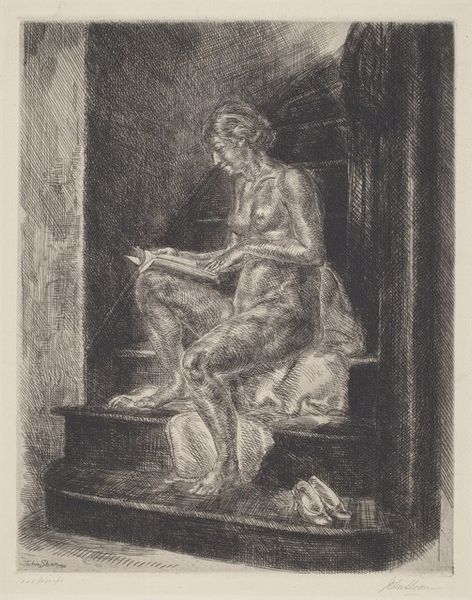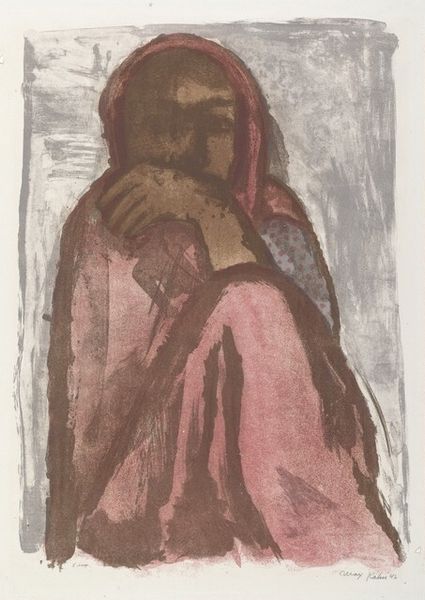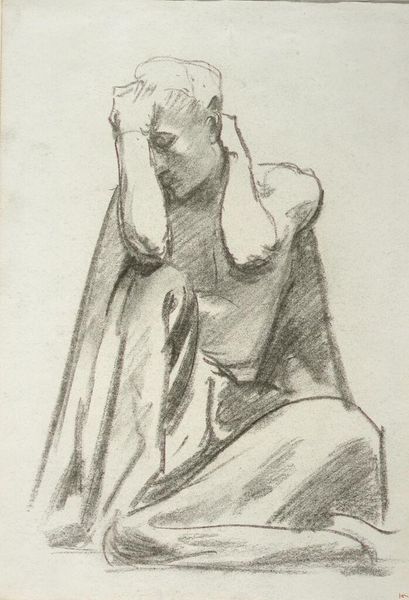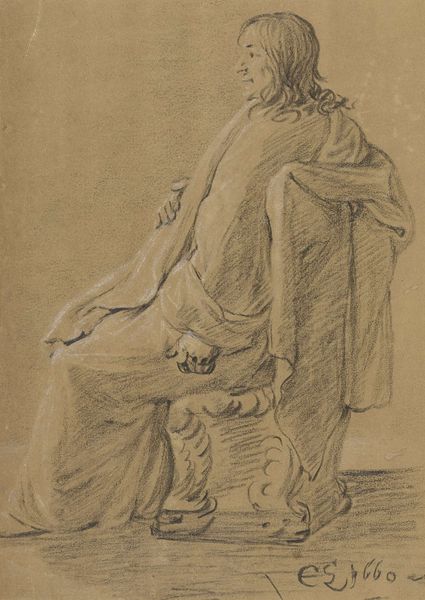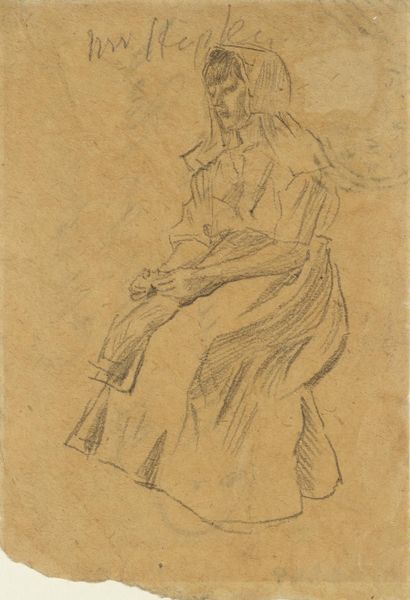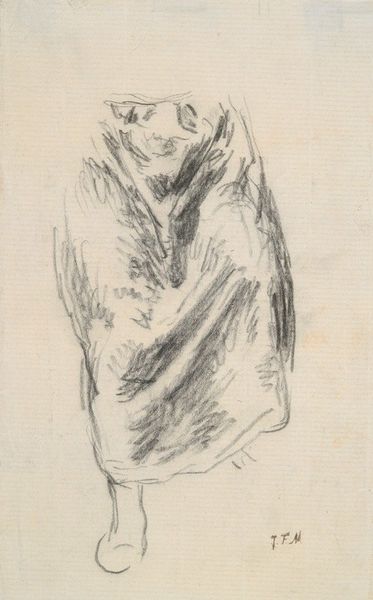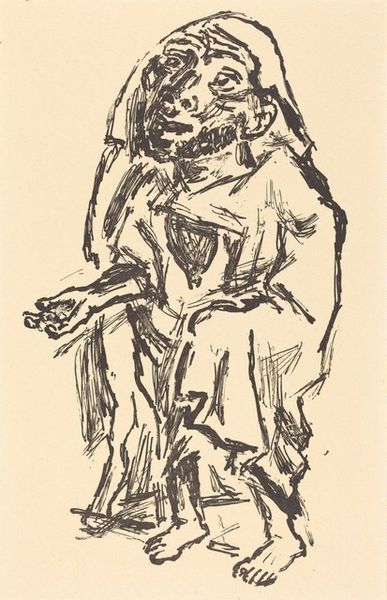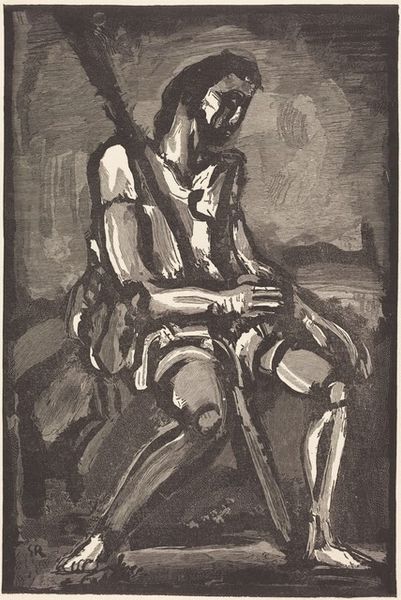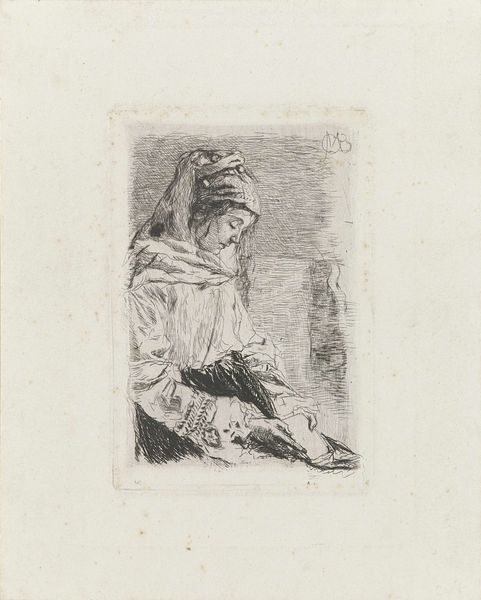
Copyright: Public Domain: Artvee
Curator: This is George Romney’s "Lady Hamilton Playing a Lyre," a drawing dating from around 1785. The work presents a seated woman, presumably Lady Hamilton, gently embracing a lyre. Editor: It strikes me immediately as rather melancholic. The monochromatic wash, the rather unfocused brushstrokes in the background... it conveys a feeling of solitude, doesn't it? Even though she’s poised with a musical instrument. Curator: That’s interesting. Romney's depictions of Lady Hamilton, who was a celebrated socialite and muse, were typically idealized and aligned with the fashion of associating women with classical imagery, especially music. Think of her more as a figure of cultivated elegance. Editor: But the rapid brushwork, and even the visible framing lines, almost hint at the unfinished, the process itself being highlighted rather than the polished end product. Doesn't this give it a slightly vulnerable, less "performed" quality? Is it possible this highlights something of Emma Hart, beyond Lady Hamilton? Her rise from relatively humble beginnings. Curator: It’s definitely a more intimate portrayal than his grander history paintings. Romney, a prominent portraitist in his time, maintained a long professional association with Lady Hamilton, which culminated in many artworks now displayed in institutions across the world. These drawings served perhaps as studies. Editor: And given that context, perhaps these depictions are a negotiation. A tension between constructing an ideal, embodying an era's romantic fascination with antiquity, while also subtly allowing for the nuances and complexities of the sitter herself. Curator: The drawing shows her as part of a visual culture that equates her beauty with music and the arts. Consider how these representations both defined and, perhaps, constrained her public persona. Editor: I agree; art’s always been a part of politics! In the drawing, Romney gives us a sense of Emma Hamilton as a woman made iconic, perhaps a reflection on artifice, agency and even how public roles are written on to the bodies of women. I see a lot here. Curator: Indeed, a potent reminder of the layered interactions present in even the seemingly simplest portrait. Editor: I concur; it makes you reflect how one portrait opens up such larger ideas.
Comments
No comments
Be the first to comment and join the conversation on the ultimate creative platform.

